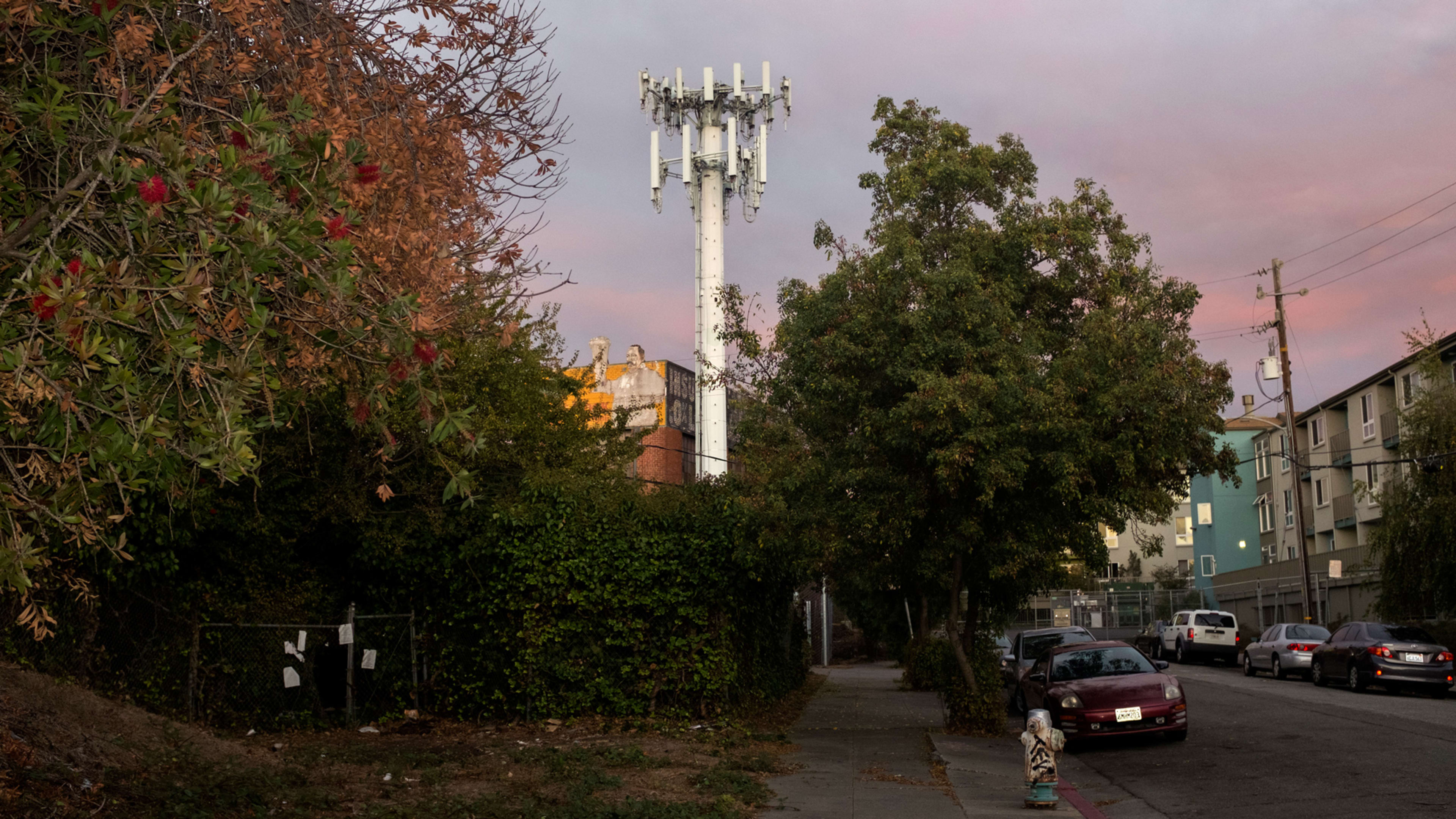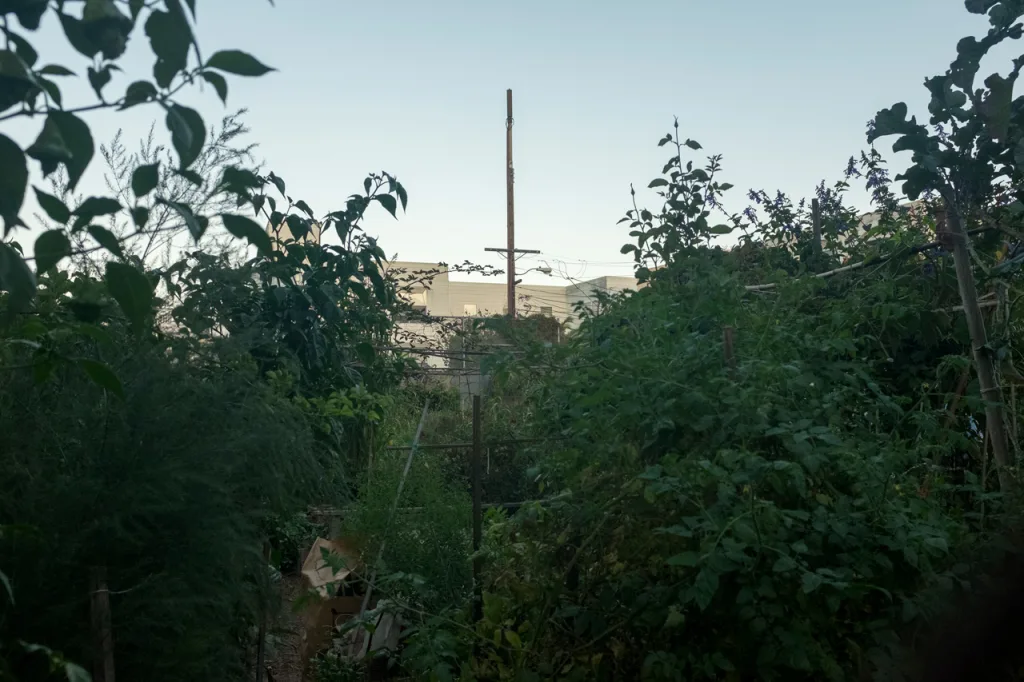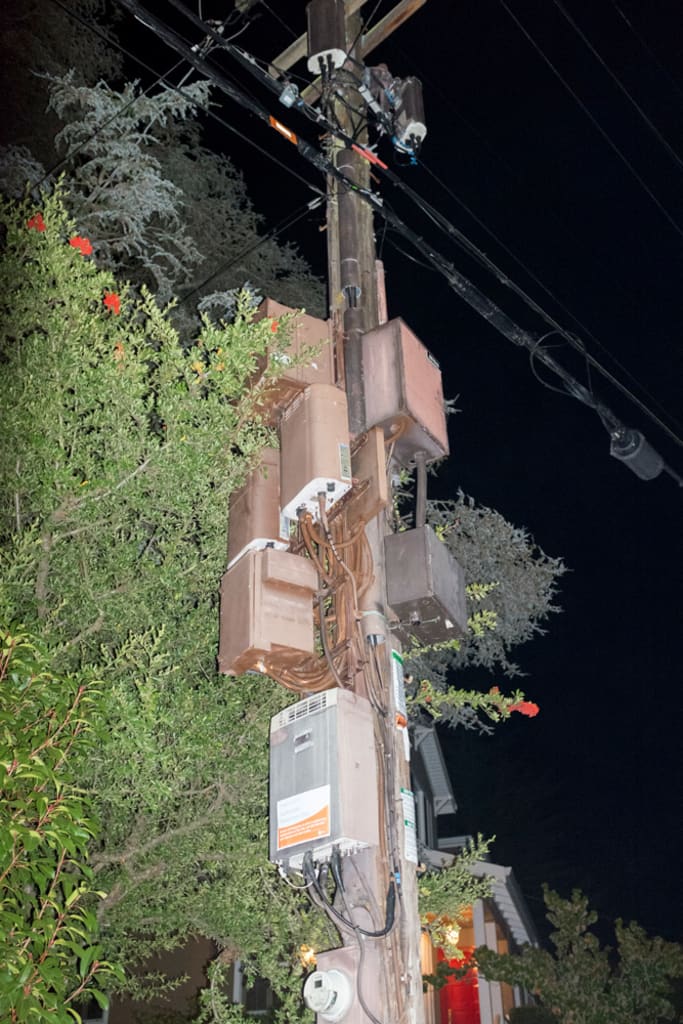Once the photographer Rian Dundon began seeking out cell-phone towers and transmission boxes, he started seeing them everywhere. “I realized I was walking by a few of them just on my way to work every day,” Dundon says, even though before he began photographing them, they’d barely registered.
Based in Oakland, Dundon had for a while been interested in “toying with the notion of different ways to see the pervasiveness of corporate technology in our lives,” he says. We’re used to the image of a person clutching a cell phone before their eyes as the representation of telecommunications’ reach, but Dundon wanted to take a different approach. When the Economic Hardship Reporting Project–a D.C.-based journalistic nonprofit with whom Dundon had previously worked, and who supported this series–approached him asking if he was working on any projects specific to California, a new way of framing the topic began to take place.
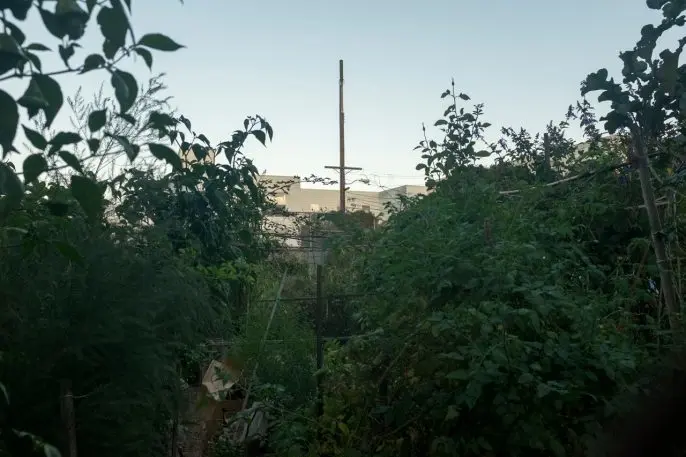
The galvanizing event for Dundon’s work on this project was the introduction of California Senate Bill 649 last year, which largely would have deregulated the process by which wireless service providers install telecoms infrastructure in cities. To roll out new high-speed 5G wireless networks, companies like AT&T have to install small-ish (read: up to refrigerator-size) transmitter boxes that, rather than the antennas atop tall towers, sit closer to the ground and reach a service area of only around two blocks. As such, the companies would have to install a lot–perhaps thousands–of these boxes across cities and towns to scale 5G. Local regulations could pose a serious hurdle to the telecoms companies: If AT&T had to get a permit for each box, the process would move at a snail’s pace.
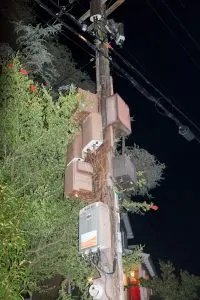
While expanding wireless and broadband access to underserved communities is important, “there’s got to be a better way to do it than just handing the keys over to the telecoms companies,” Dundon says (municipal broadband networks are one option; local mesh networks are another). Without local input, there’s no way for cities and counties to ensure that the providers are installing the networks equitably, nor is there any way for the cities to generate revenue, which they then could use to subsidize other public infrastructure projects, off of the land usage.
In his photographs, Dundon avoids a directly political statement, and rather sees his images as reminders to look around and notice the presence of this infrastructure, and what it signifies about the pervasiveness of private companies in public spaces. To him, the unchecked expansion of private communications systems represents a growing imbalance between communities and companies. “This is an inequality issue,” Dundon says. “It’s just not one that we often talk about.”
Recognize your brand’s excellence by applying to this year’s Brands That Matter Awards before the early-rate deadline, May 3.
